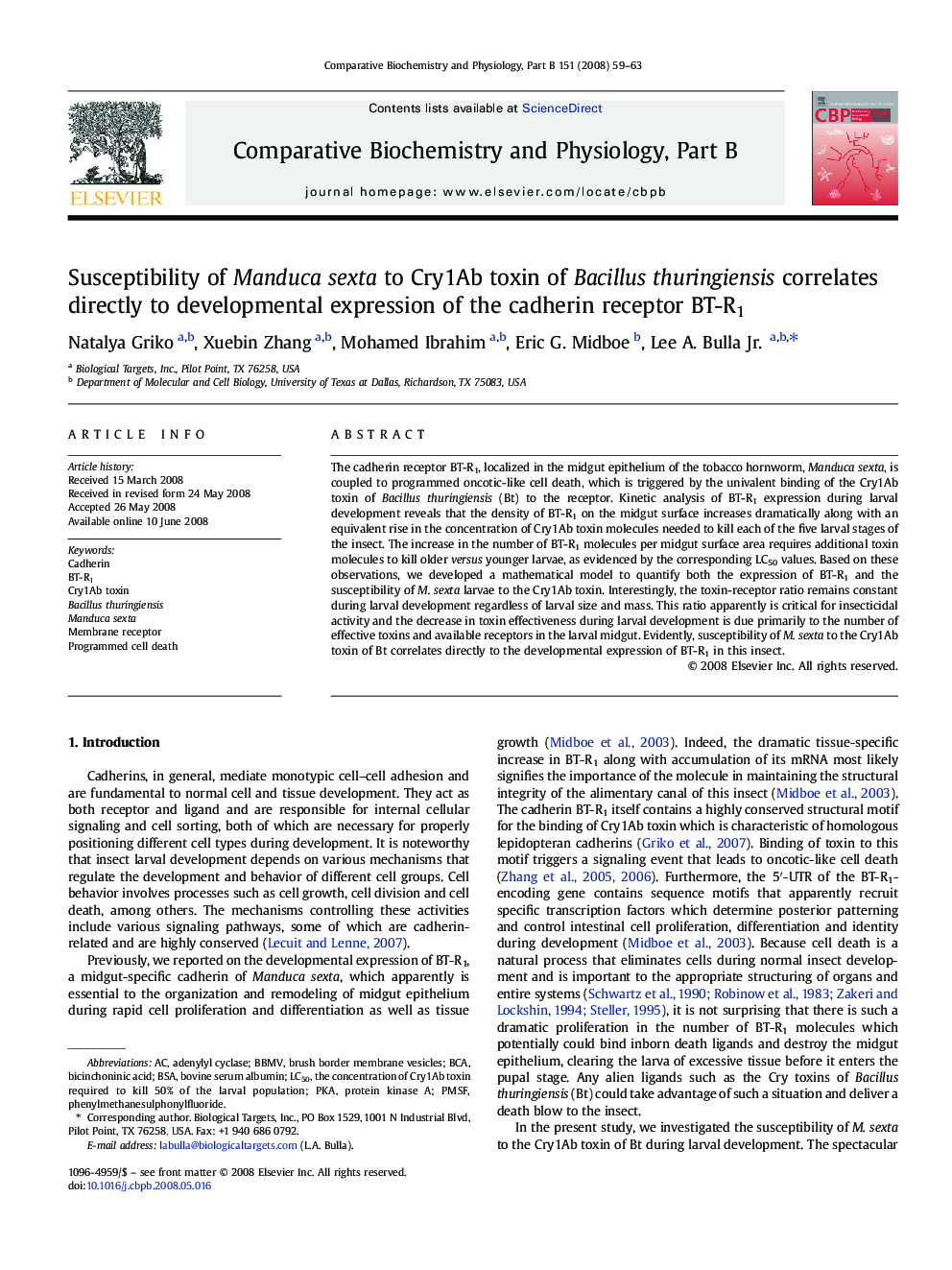| Article ID | Journal | Published Year | Pages | File Type |
|---|---|---|---|---|
| 1976384 | Comparative Biochemistry and Physiology Part B: Biochemistry and Molecular Biology | 2008 | 5 Pages |
The cadherin receptor BT-R1, localized in the midgut epithelium of the tobacco hornworm, Manduca sexta, is coupled to programmed oncotic-like cell death, which is triggered by the univalent binding of the Cry1Ab toxin of Bacillus thuringiensis (Bt) to the receptor. Kinetic analysis of BT-R1 expression during larval development reveals that the density of BT-R1 on the midgut surface increases dramatically along with an equivalent rise in the concentration of Cry1Ab toxin molecules needed to kill each of the five larval stages of the insect. The increase in the number of BT-R1 molecules per midgut surface area requires additional toxin molecules to kill older versus younger larvae, as evidenced by the corresponding LC50 values. Based on these observations, we developed a mathematical model to quantify both the expression of BT-R1 and the susceptibility of M. sexta larvae to the Cry1Ab toxin. Interestingly, the toxin-receptor ratio remains constant during larval development regardless of larval size and mass. This ratio apparently is critical for insecticidal activity and the decrease in toxin effectiveness during larval development is due primarily to the number of effective toxins and available receptors in the larval midgut. Evidently, susceptibility of M. sexta to the Cry1Ab toxin of Bt correlates directly to the developmental expression of BT-R1 in this insect.
